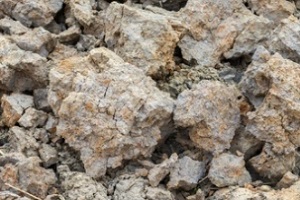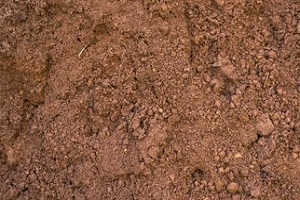 New gardeners quickly find that all soils are not created equally, and some types are far more hospitable to particular crops and flowers than others. Having a good understanding of the different types of soil and their qualities can help make your garden a success.
New gardeners quickly find that all soils are not created equally, and some types are far more hospitable to particular crops and flowers than others. Having a good understanding of the different types of soil and their qualities can help make your garden a success.
One type of soil you may come across is loam. Many planting instructions recommend planting in loam soil, which is essentially a healthy balance of silt, sand and clay soil. Although many people believe that the terms loam soil and topsoil are used interchangeably, they are not actually the same.
What Is Loam Soil?
Topsoil simply describes where in the garden the soil came from, which is typically the top foot of soil. However, it does not provide much information about its composition. Depending on where the topsoil originated, it could be mostly clay, mostly silt or mostly sand. Therefore, purchasing topsoil will not necessarily provide you with loam.
Loam soil, in contrast, refers to soil that contains a mix of three types of soil in roughly equal proportions:
Clay Soil
This type of soil feels slippery when it is wet, and it is possible to form it into a tight, hard ball. When it is dry, however, clay soil will be packed down and very hard. Clay particles are small and easily compacted, which means they cannot let a lot of air, water and plant roots through. However, it is higher in nutrients than other components of loam soil.
Sandy Soil
Sand has large particles, and although it does not hold onto moisture well, it does provide good drainage and aeration. Sandy soil runs loosely between your fingers when you pick it up and is rather coarse when dry. Unlike clay, you cannot form damp, sandy soil into a ball when it is wet.
Silt
Silt is a medium-sized particle that provides superior moisture retention to sand but offers fewer nutrients than clay. It helps sand and clay mix together more readily. It feels soft and can be formed into a loose ball when it is wet.
 Because it is a mixture of these three soil types, loam soil is able to hold water yet drain at an agreeable rate of around 6 to 12 inches per hour. This means that the roots of the plant will not sit in water for too long and potentially rot. Its loose and crumbly texture means it is “friable,” which is important for providing room for oxygen to aid root growth. It is typically rich in nutrients and minerals for plants to grow while remaining loose enough that roots are able to spread out and grow strong.
Because it is a mixture of these three soil types, loam soil is able to hold water yet drain at an agreeable rate of around 6 to 12 inches per hour. This means that the roots of the plant will not sit in water for too long and potentially rot. Its loose and crumbly texture means it is “friable,” which is important for providing room for oxygen to aid root growth. It is typically rich in nutrients and minerals for plants to grow while remaining loose enough that roots are able to spread out and grow strong.
What Is Loam Soil Used For?
Loans soil is the ideal medium for growing plants thanks to its content of minerals, organic matter and empty space. It is ideal for most plants; those that require other types of soil will typically specify this in their planting instructions. Some plants may require rocky or sandy soil, and a few varieties even require clay.
Does Your Garden Bed Contain Loam?
It is possible for a garden bed to naturally contain loam, but many times, native soil needs some help to reach the ideal composition.
There is a simple test that you can carry out to confirm that your soil is loamy. Fill a mason jar halfway with the soil you wish to check and then add water to the jar until it is three-quarters full. Place the lid on it and shake it thoroughly until no soil is stuck to the bottom or sides of the jar. Shake it for several minutes, and then leave the jar to rest for a few hours.
As soil settles to the bottom of the jar, you will start to see distinct layers. Sand will form on the bottom, while the middle layer will be made up of silt and the top layer will be clay. If these three layers are roughly the same size, you most likely have a good loam soil.
How Can You Create Loam For Your Garden?
Because loam is a mix of silt, clay, and sand, you might believe that you can balance out your soil to achieve the right mix. For example, if you have clay soil, you might think that adding sand to it will help it become loamy.
However, turning existing soil into loam is a more complicated process. Although it is possible to achieve loamy soil, you need to incorporate organic matter into your soil each year. The decomposing organic material will provide your soil with the draining properties your plants need to thrive. Introducing organic matter to the soil also means that it will attract beneficial organisms that help keep your soil healthy. Straw, finished compost and shredded leaves all work well to create the loamy soil you need as they decompose.
 However, it is important to keep in mind that organic matter is depleted rather quickly as it decomposes. Therefore, the soil must be amended each season. The amount of organic material that needs to be added will depend on how out of balance your soil has become. For example, if it is very heavy in clay or sand, it may need significant amounts of organic matter added to it several times per season. Most soils, however, will perform well if a 2-inch layer of organic matter is laid over the surface and worked into the top few inches of the soil.
However, it is important to keep in mind that organic matter is depleted rather quickly as it decomposes. Therefore, the soil must be amended each season. The amount of organic material that needs to be added will depend on how out of balance your soil has become. For example, if it is very heavy in clay or sand, it may need significant amounts of organic matter added to it several times per season. Most soils, however, will perform well if a 2-inch layer of organic matter is laid over the surface and worked into the top few inches of the soil.
It is also possible to purchase loam soil in bulk, although this can be expensive if you need to cover a significant area with it.
Reach Out To Dirt Connections
High-quality soil makes all the difference in your gardening endeavors. Dirt Connections is a provider of high-quality soil and dirt for a range of projects, offering everything from loam and topsoil to fill dirt and bio-mix soils to customers in the Virginia and Maryland area. Get in touch today to find out how we can help you get the right soil for your needs.
Summary

Dirt Connections was started with one goal in mind: providing quality residential and commercial construction services to clients on time and on budget. Reach out for more information on how we can support your next project.
For your convenience our estimates are free and by appointment. Call 703-940-9949 for a free estimate today!









































